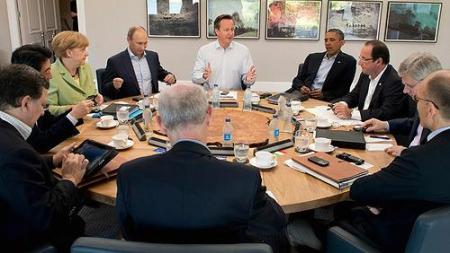Theory of Conspiracy
 In life it is never a mathematical proposition which we need, but we use mathematical propositions only in order to infer from propositions which do not belong to mathematics to others which equally do not belong to mathematics. –Ludwig Wittgenstein (1922)
In life it is never a mathematical proposition which we need, but we use mathematical propositions only in order to infer from propositions which do not belong to mathematics to others which equally do not belong to mathematics. –Ludwig Wittgenstein (1922)
David Grimes, a physicist, calculates large-scale conspiracies are impossible. Someone somewhere–a whistleblower or bungler–will leak the goods.
The issue missed here, however, as Stephen Colbert–channeling Slavoj Žižek–put it to Donald Rumsfeld the other night, are the unknown knowns, the crimes the brigades of ideological shock troops among us pretend ignorance of in the service of expediency.
That is, in a reading of the WikiLeaks cables ironically enough, is the business of empire really something other than an albeit open conspiracy? And who, then, are the more dangerous conspirators now dining in our best restaurants–the true believers or the manipulative cynics?
When conspiracies are turned into matters of state and power their probabilities of failure must, if by dint of the existential nature of their premises, level off to a horizontal asymptote well below unity (p=1) or, perhaps, even off the graph.
So a whistleblower or a lead-poisoned city or a busted billionaire isn’t enough to stop the show. It’s why the Pentagon Papers didn’t stop the Vietnam War or the housing collapse the banking system. It’s why muckraking and transparency aren’t enough. It’s why Grimes’s parameter space, as all models, is something of a house of mirrors, reflecting only its own assumptions.
Along the way our physicist also commits an error in epistemic opacity. Grimes uses the variates around actual, whistle-blown conspiracies to parameterize his model of when a series of fake conspiracies–moon-landing, anti-vaxx etc.–would have been exposed.
Mind you, I have great sympathy for the author’s point. Climate change is real. Vaccines work (to a point). But what of the silent evidence? What of the conspiracies that continue or died silent deaths–see the Gompertzian decay in Grimes’s Figure 1–or, our point here, bloomed into official policy, including those that produced climate change in the first place?
The mythbusting here borders on the assumption bad things happen only when bad people convene to conspire secretly. The truth, after all, is out there. And that is all we need to defend ourselves.
One could reread the results, however. The author’s Figure 2, for instance, shows the failure curves drop off as fewer institutions (and individuals) are involved.
We might reverse course and ask what happens when a conspiracy becomes a part of the greater fabric of a civilization whether or not its members are conscious initiates. Do such conspiracies become too big to fail?
February 4, 2016 at 4:50 pm
As they say on some planets, “The truth is…. Out of fashion.” (https://www.youtube.com/watch?v=bocPRHDBuh4)